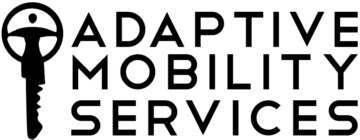
Assessments Every OT DRS Should Master
If you are an Occupational Therapist stepping into Driver Rehabilitation, having a solid toolkit of assessments is essential. These tests help you determine whether a patient can drive safely overall and further determine who needs adaptive equipment or would benefit from more training.
Below are key assessments that every OT DRS should master.
1. Visual and Perceptual Tests
Safe driving relies heavily on accurate observation of the environment. Visual and perceptual deficits can negatively impact people seeing hazards, the way they position their vehicle on the road, and the ability to read important signs.
Common tests include:
- Motor-Free Visual Perception Test (MVPT-4)
- Dynavision or Useful Field of View (UFOV)
Difficulty spotting objects against a busy background may suggest that someone may have a hard time spotting pedestrians in a busy traffic environment. Slower processing of visuals could delay a necessary reaction to a stop light or an animal crossing the road.
2. Reaction Time & Coordination
Driving requires quick responses to changing situations, whether that be braking suddenly or avoiding small obstacles. A coordination test can highlight how well a patient reacts in real-world situations.
Common tests include:
- Purdue Pegboard or Box and Block Test
- Choice Reaction Time Tasks
Slower reaction times may affect how quickly someone brakes when traffic slows down. It could also impact their ability to merge safely onto an interstate highway. Limited hand-eye coordination could mean steering or using turn signals is difficult.
3. Executive Functioning & Judgment Tasks
Driving is a complex activity that requires constant multitasking. Thinking or memory challenges increase the risk of error, resulting in unsafe driving behaviors.
Common tests include:
- Trail Making Test (TMT)
- Stroop Test
- Clock Drawing or Functional Judgment Scenarios
Trouble following steps in the right order may lead to taking a wrong turn or making an incorrect lane change. In general, poor judgment can result in risky decisions in active traffic.
4. Motor & Strength Tests
Having enough strength and a full range of motion are both essential for steering, controlling foot pedals, and getting in and out of a car safely.
Common tests include:
- Grip Strength Dynamometer
- Range of Motion Assessments
- Timed Up & Go (TUG)
If the feet, legs, or hips are not functioning well, a driver may not be able to use their brakes or gas pedals well. A restricted shoulder or neck range can affect how someone checks their mirrors.
5. Vision Tests
Clear and sharp vision is critical for safe driving. Even a minor fault in contrast or depth could increase the risk of an accident.
Common tests include:
- Snellen Chart
- Contrast Sensitivity Test
- Depth Perception Assessments
If contrast sensitivity is low, someone may struggle to drive at night or read faded road signs. Depth perception difficulties can affect someone’s ability to park their vehicle.
Take Your Skills to the Next Level
These assessments begin to form the foundation of driver rehabilitation. However, knowing the tests is only the start. Specialized training and mentorship is required to carry out tests efficiently and interpret results with accuracy.
Adaptive Mobility offers comprehensive OT DRS training and mentorship to help you gain confidence in knowing when and how to use these assessments. With the guidance of Susie Touchinsky, you will be equipped to help patients safely regain their driver independence.
Meet Susie!

Susie Touchinsky, OTR/L, SCDCM, CDRS, is an established expert in both occupational therapy and driver rehabilitation. She has been an OT for more than 20 years and brings expertise and a love for helping others in her speeches and trainings.
Learn More With Our OT Driver Rehabilitation Specialist Courses
Try Our Free OT DRS Courses:
- OTs Role With Driving
- GRID: Generalist Resource to Integrate Driving
- Readiness to Drive: IADL Checklist
- FREE 6 Driving Resources for the OT
- 5-Steps Our Clients Use to Start Their Own Highly-Paid OT Driver Rehab Business
- Driving Risk Screening Tools
- BCAT Brief Cognitive Assessment Test System Overview
- BCAT Part 2: CBS 8 & 15-for-Me
Become the best OT Driver Rehabilitation Specialist you can be by being a life long learner.
